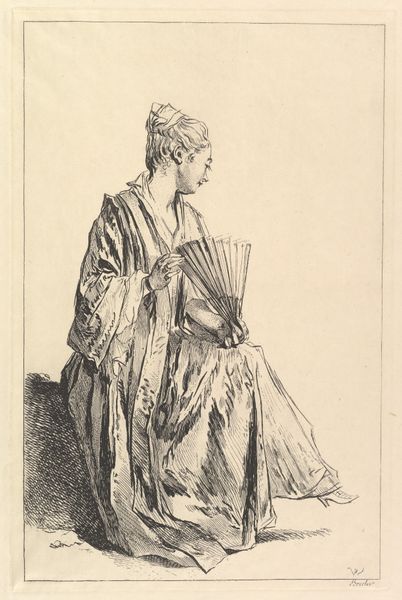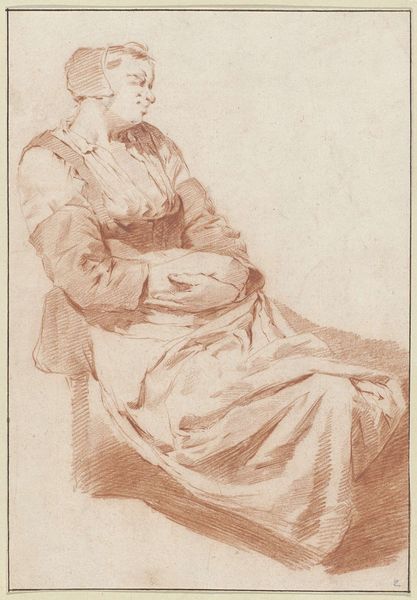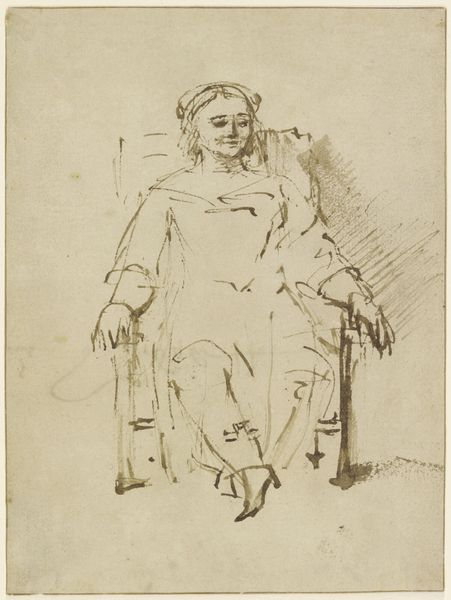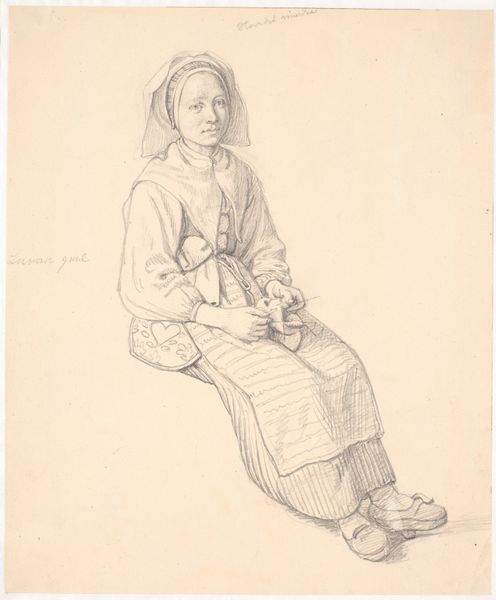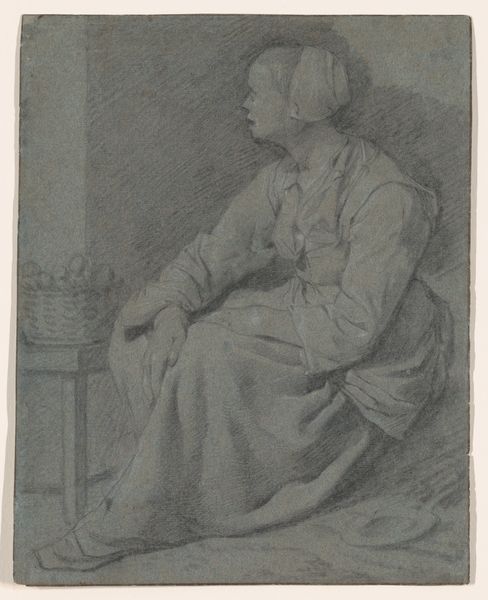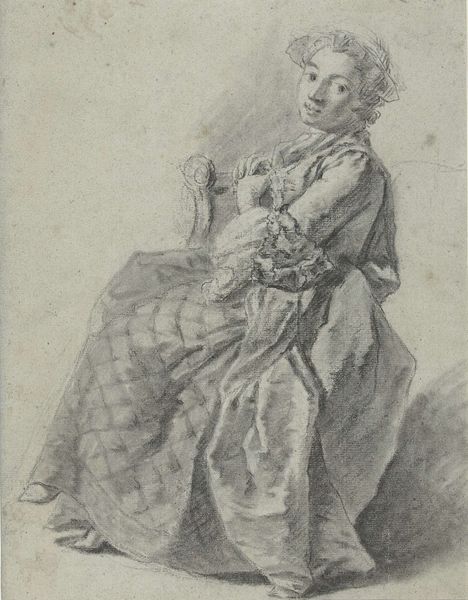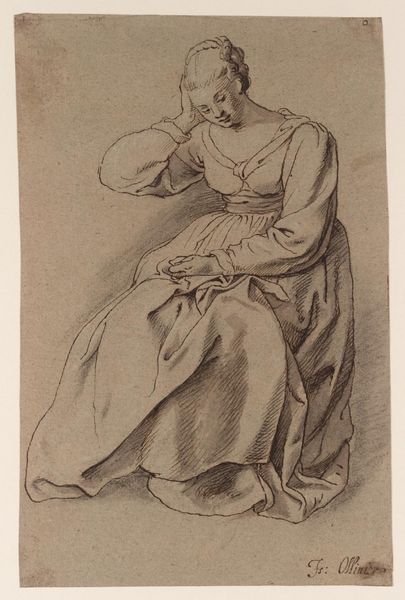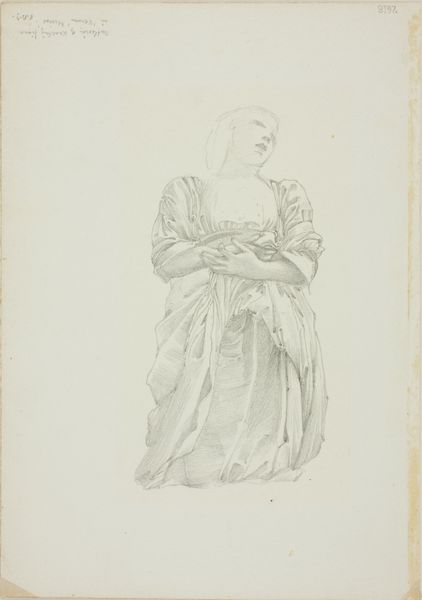
drawing, paper, pen
#
portrait
#
drawing
#
narrative-art
#
dutch-golden-age
#
figuration
#
paper
#
pencil drawing
#
pen
#
portrait drawing
#
genre-painting
#
realism
Dimensions: height 202 mm, width 154 mm
Copyright: Rijks Museum: Open Domain
Curator: Here we have Cornelis Bega's "Study of a Woman Seated, Leaning on her Right Arm," a pen and pencil drawing on paper dating back to the early 1660s. What’s your initial impression? Editor: Immediately, I'm struck by this incredible sense of weariness, like the weight of centuries is pressing down on her shoulders. Curator: It’s funny, isn't it? She could be a saint in repose or someone simply waiting for the water to boil. It's precisely that ambiguity, I think, that keeps drawing me back to this artwork. Editor: True, there's definitely a compelling lack of sentimentality. What resonates with me is her anonymity. In a culture so defined by rigid social structures, this could be any woman and every woman. A poignant reminder that art history tends to foreground the voices of the elite and the powerful. Curator: The lines themselves, the rapid strokes, feel less like a detailed observation and more like a fleeting impression. Look at her hands, for example. Barely defined, yet they convey such a sense of rest. Editor: The way Bega employs shadow, too—it's fascinating. See how the strong shadows ground her, while also hinting at an interior world. There's a dialogue happening here between presence and absence, isn’t there? This technique certainly makes a nod to gender studies when considering the historical context. Curator: Perhaps. I lean toward seeing it as Bega grappling with the challenge of representing the weight of a life lived—and those hidden interiorities. There’s a humbleness there. Editor: Absolutely. What’s remarkable is the enduring resonance of this modest sketch. Its simplicity allows us to consider larger ideas. How do we honor the countless stories of ordinary people—specifically, women—whose experiences have often been marginalized? Curator: I see your point, and it makes me wonder what the woman herself might make of our speculations! It’s so tempting to try to fill in her narrative. Perhaps that’s why the drawing continues to speak to us, because in its quiet way, it makes room for everyone's story. Editor: A truly wonderful insight.
Comments
No comments
Be the first to comment and join the conversation on the ultimate creative platform.
